The Book VS The Movie

Photo Source: Pexels.com
April 7, 2023
Many novels often become so successful that they are turned into movies. However, have you ever wondered how accurate the movies are in comparison to the books?
The inaccuracy of these movies could come from directors simply trying to shorten the movie, or the detail not being deemed worthy of the screen time. While sometimes details need to be omitted, losing these important details of the story can often cause the movie to lose its overall message.
This article will discuss the general differences between the novels and their corresponding adaptations into film.
1. The Hunger Games
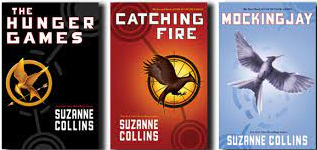
- The Mockingjay Pin
In the movie, Katniss goes to the Hob right before the Reaping, where she acquires the pin from a merchant. Katniss was originally there to trade food when she saw the pin, and upon asking how much it was the merchant gave it to her for free.
However, this is quite different in the book. Katniss actually gets the pin from her classmate, Madge Undersee. The pin was Madge aunt’s, who died in the 50th Hunger Games. Madge Undersee was actually completely missing from the movies, which was unusual considering other supporting characters made it.
The Mockingjay pin is very important to the book series, as it later becomes the symbol of the rebellion. So, it is pretty interesting that the filmmakers chose to change the story of its origin, especially since the pin came from someone whose family member died in the Hunger Games.
- Peeta’s Leg
A huge detail that is cut out from the four movies is the fact that Peeta gets his leg amputated.
In both the movie and the book, Peeta gets stabbed in the leg during the actual Hunger Games. The detail about his wound getting infected and Katniss doing everything she could to try to treat the wound is similar. Although what differs however is how the injury heals.
In the book, Peeta’s leg gets amputated by the Capitol, as the doctors couldn’t save it, even with all of their medical advancements. The Capitol gives Peeta a prosthetic leg, which is brought up all the time in Catching Fire.
Whereas in the movie, Peeta makes a full recovery and his injury isn’t brought up in other movies. Peeta’s prosthetic leg is a major plot point, so we feel like it should have made the final cut of the movie.
2. The Help
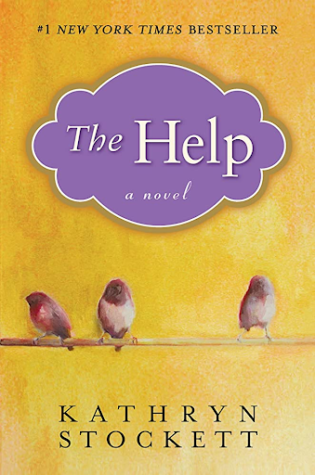
- The Engagement
In the book, Stuart proposes to Skeeter, which leads to her telling him about the book. Upon reading about the book, Stuart breaks up with Skeeter. He does this because he believes that Skeeter’s book will hurt his father’s political career. However, that detail was different in the movie.
In the movie, Stuart never proposes to Skeeter but does indeed break up with her due to the book. Cutting out the proposal was a strange decision, as the directors still included their relationship.
We believe that it wouldn’t have been very hard to throw the proposal into the scene where Stuart breaks up with Skeeter. Plus, Stuart’s reasoning for the break up was also an important detail as it further explains how people of the South view the inequality between races.
- Main Character
The biggest difference between the book and the movie is who is considered the main character.
The movie is set up to have Skeeter as the main character. Which is simply just very different from the book. Skeeter is one of the most important characters in the book, but she wouldn’t be described as the main character.
The book sets up the story by dividing it up into parts told by the characters: Skeeter, Aibileen, and Minny. All three of these characters play a huge role in the book, so it would be wrong to refer to Skeeter as the main character. Hence, this is another area where the movie veers away from the accuracy of the book.
- The Toilet Paper Scene
An intriguing add-in to the movie was the scene where Miss Hilly draws pencil marks on the toilet paper.
While this scene does not happen in the book, we do feel like it was a good addition. Miss Hilly does this to find out if Minny, her help, was using the inside toilet. By adding this scene, the directors were able to further stress Miss Hilly’s racist ideology.
3. The Great Gatsby
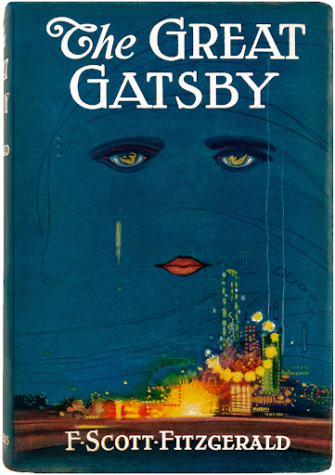
- Perspective
One crucial detail of The Great Gatsby is Nick Carraway, our “main” character, who narrates the occurrences within the novel. This detail is left out of the movie as Gatsby is the main focus.
The removal of this detail diminishes his overall meaning to the story and most importantly makes a complex character more 2-D to the viewer. So much of what interests us about The Great Gatsby was how interesting of a character he was. Without this, the overall movie feels like it lost an important piece of information in the transition from the novel.
- Daisy and Gatsby’s Relationship
Daisy and Gatsby are incredibly important to the novel itself, as the relationship is the reason Gatsby decides to start pursuing wealth and molding his goals to the American dream.
However, in the movie, the importance of this relationship is glossed over. While the film is usually pretty well received, it’s weird that they left out such an important part of Gatsby’s character to portray something different in the movie.
4. To Kill a Mockingbird
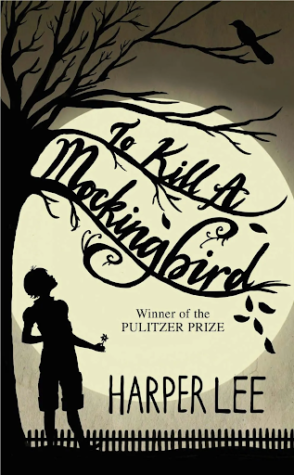
- Symbols Omitted
As most students have read To Kill a Mockingbird each and every symbol are usually painstakingly imprinted in our minds. While many may not appreciate the process of identifying the symbols, implementing each symbol makes this story so much richer.
Due to movies having such a limited run time, there will always be a struggle to fit every important message into the storyline portrayed on screen.
This is not a harsh criticism of the film itself—due to limitations when it comes to film, the novel is arguably made better overall because of its essential symbols that give the story its classical importance.
- Scout’s Difference in Narration
Another well-known aspect of the novel is Scout’s older narration throughout the story. This unique point of view allows her to “write” the events as past look-backs, rather than them being simply in the moment.
In the movie, Scout’s point of view is dropped, leaving her and the viewer to look at the situation through a child’s lens; making it much harder to take a closer look at the characters’ actions and storyline.
This causes the entire film to portray itself differently from the novel, at least to those who have read the book. Without Scout’s narration, the story’s nuances about race are much harder to understand on a deeper level.
- The Mad Dog Scene
When analyzing the novel it’s obvious that this scene is an extremely important moment in a multitude of characters’ development.
Within the story, the “mad dog” is used to represent the racism that the town relies on and relates it to disease. This moment is also important character development for Atticus, as the reader learns more about his personal life. Additionally, the children learn that their father has more substance than the stuffy lawyer they had known.
In the movie, this important scene is simplified down, causing it to lose the meaning it once held. While the scene still overall focuses on Atticus as a character it does not speak in the same volume of racism as the book had before.
5. The Color Purple
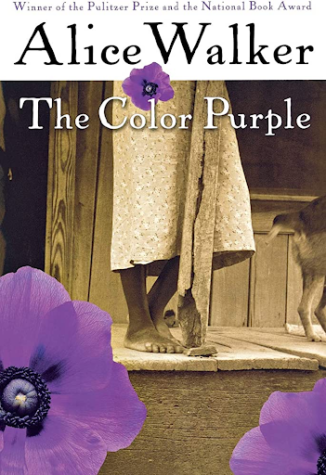
- Letters Between Nettie and Celie
One of the main plot points in the novel are the hidden letters that develop the realtionship between Nettie and Celie. These letters are also the most important aspect of Celie and Albert’s degrading relationship. The letters give Celie the courage to run away from her abusive husband and home and help her realize her true worth in society.
Whereas in Steven Spielberg’s movie, Celie is regularly mailed the letters rather than finding them at the end. This ruins two main developments of the story, the time ambiguity and Ceilie’s character snap.
Finding those letters, after knowing Albert had hidden them for so long, drove Celie to leave her husband and run away. This provided the perfect character development to describe her inner change. Without this, Celie feels less fleshed out and her reason for leaving seems shady.
- Shug and Celie’s Relationship
Another one of Celie’s main character developments is her realization that she was a lesbian or that she had been in love with Shug Avery. In the book, Shug was an important figure for Celie that allowed her to assess her damage. Shug had truly shown her what love was.
In the movie, this was taken away and further lessens Celie’s character overall and removes a large and important part of the story.
When Speilberg watered down this aspect of the film it cheapened the relationship that the two shared, and removed the progressive take on female relationships and love.
- The Drop of Letter Narration
The novel is narrated through the multitude of “letters” that Celie writes. This letter format is an understandably tough way to film, but the letters implicate the true richness of Ceiles inner thoughts and feelings. In the film, it forms these nuances that needed to either be replicated or shown through other techniques.
While this is a hard concept to grasp in film, it was attempted by Speilberg but dropped halfway through. Ultimately, we felt that our comprehension of Celie was lacking compared to just watching the movie rather than reading the book.
6. The Notebook

- Age Difference
In the book, the main characters Noah and Allie first meet at ages 17 and 14. Their meeting was set in 1932. However, Noah being 3 years older than Allie was a detail not included in the movie.
In the movie, Allie is 17 years old and the year is 1940. The audience is also led to believe that Noah is around the same age as Allie. This detail was most likely changed to make the movie much more relatable and make the relationship much less alarming.
- The Separation
Within the story, Noah and Allie get separated in 1932, as Allie’s parents disapprove of their relationship, and they are forced to separate.
While the main plot of the book was left unchanged, the timeline was changed. Much like the age difference, the year is pushed forward. In the movie, the couple breaks up in 1940 right before World War II.
This change was mostly done as a strategy to make the movie more dramatic. By making the break up right before the war, the movie is able to add a dramatic feel, as well as it made the movie more relatable.
Last Thoughts
Overall, it’s easy to acknowledge that the process of adapting a book into a movie is not always easy. However, when so much meaning is lost in translation, it’s tough to really weigh the movie against the book. while we did cover a lot of different books that may not be perceived well today, we know that a bad movie is not always the direct result of the transition from the novel to the film.
Furthermore, we know that you don’t have to read the book that corresponds to a specific movie, and the same goes for the book. The goal is to appreciate the book and the film for what they put forth as two separate pieces of media. We think that by acknowledging that both have their fatal flaws and key triumphs it enriches the process of looking deeper into the overall storyline. As our closing note we want to encapsulate what truly makes a book to a movie so important- the differences!
